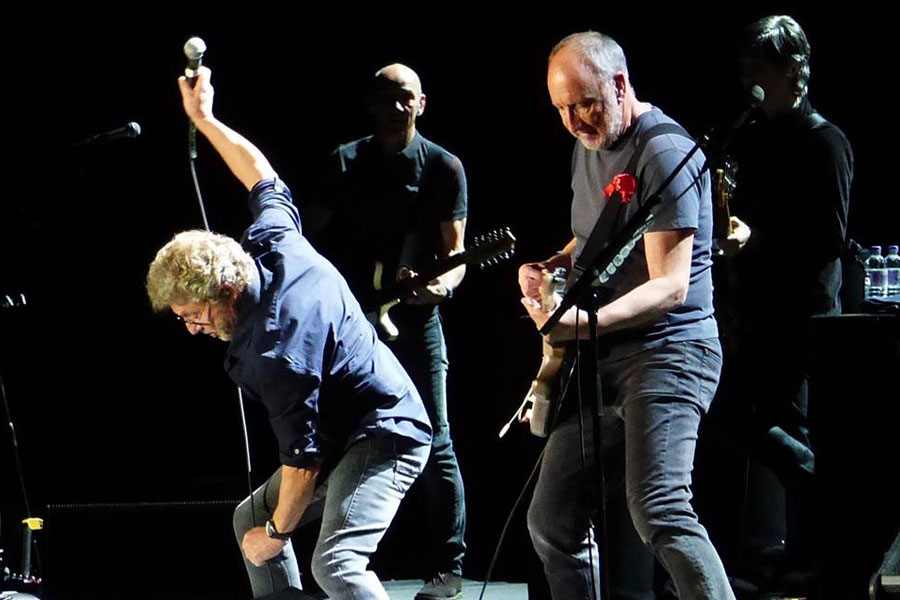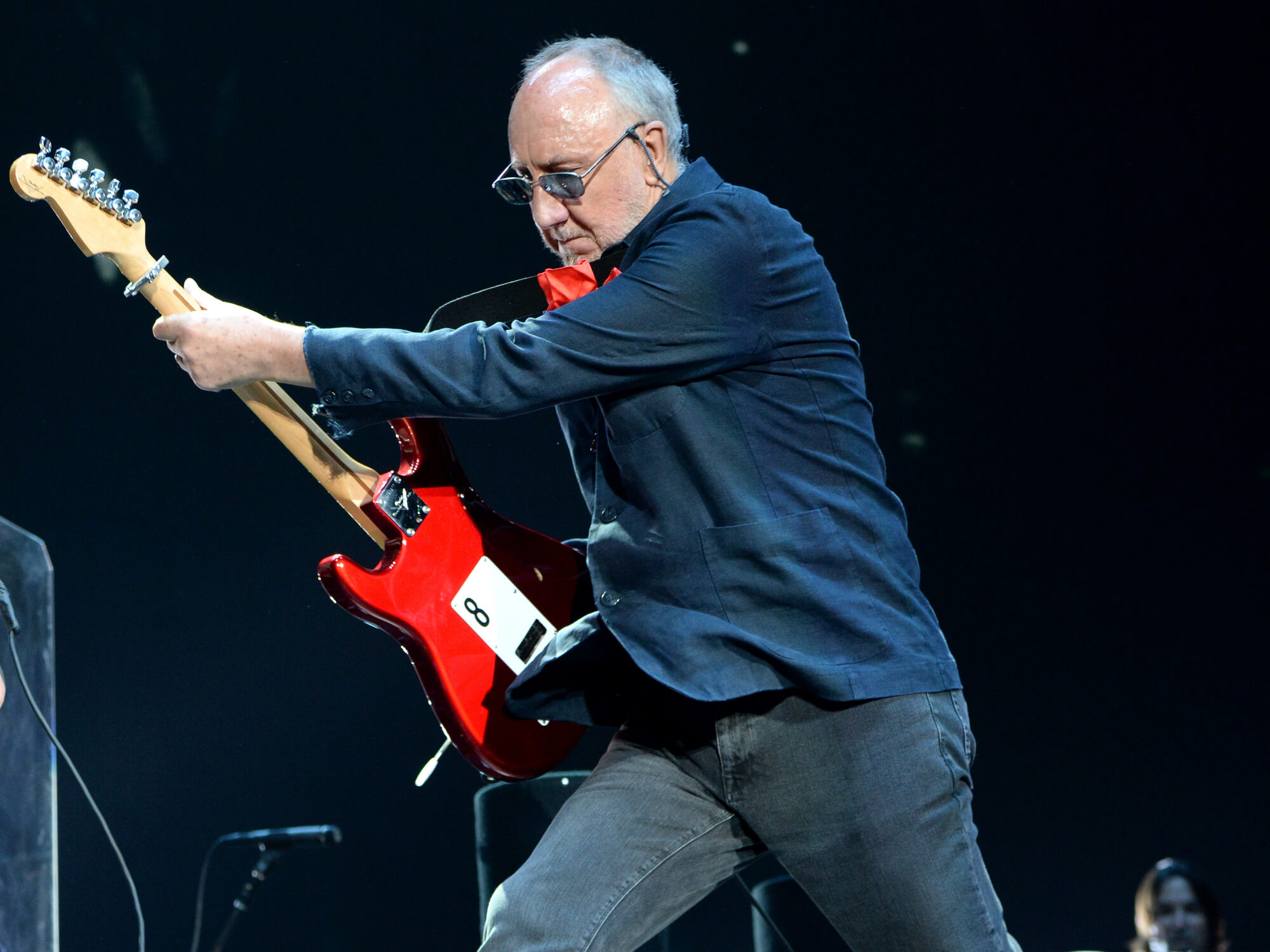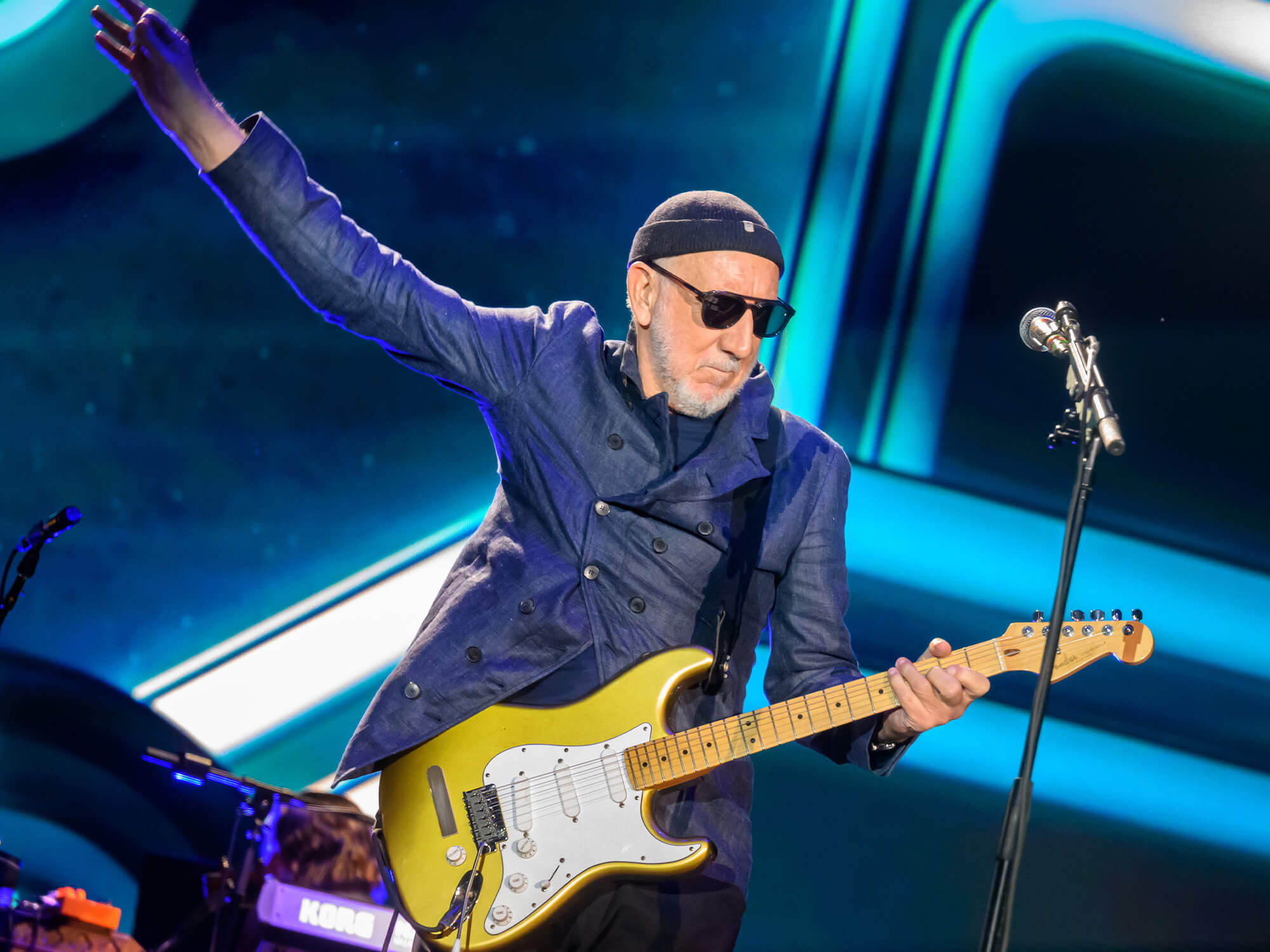
In a row house in a working-class London neighborhood 40 years ago, a young boy was given a clarinet by his father. The boy failed miserably on the instrument. Had he succeeded, he might never have tried the guitar a few years later, and we might still be listening to Paul Anka, wearing butch wax hairdos and believing everything our parents and politicians told us. The boy was Pete Townshend, and he has had as much to do with hard, pure, angry, irreverent, loud rock and roll–and all that it wrought–as anyone else.
Townshend became the leader of the Who, the band rock historian Greil Marcus claims “represented the very spirit of rock and roll.” A quick list of the Who’s best songs is testament: “My Generation,” “I Can See for Miles,” “I Can’t Explain,” “Magic Bus,” “Won’t Get Fooled Again,” “Behind Blue Eyes,” “Baba O’Reilly,” “Who Are You,” And from “Tommy,” the classic rock opera, “Pinball Wizard,” “I’m Free” and the haunting “See Me, Feel Me.”
If the Who was rock and roll’s spirit, the spirit of the Who was Townshend, who has remained a vital force since the group disbanded in 1982. Indeed, this has been a remarkable decade for Townshend. He co-produced “The Who’s Tommy,” which opened on Broadway in 1993 and won five Tonys, including one for Townshend’s musical score, and the Drama Desk award for the best musical. The production looks as if it will run, sold out, for the foreseeable future. Frank Rich, in “The New York Times,” wrote, “Tommy is at long last the authentic rock musical that has eluded Broadway for two generations.” The original cast recording– produced by George Martin, who also produced the Beatles’ albums–was released, and the original version of “Tommy” by the Who was re-released. And Townshend wasn’t only repackaging his classic Who material, either; he debuted “Psycho Derelict,” an infectious collection of songs built around a play. With a new band and a cast of actors, he took “Psycho Derelict” on a sold-out tour through the U.S., and it aired as a pay-per-view television broadcast.

Townshend was born in London just as World War Two ended. Both of his parents were musicians–his father played sax and clarinet with the Squadronaires, a Royal Air Force band, and his mother was a singer. To make ends meet between gigs, they ran an antique shop.
After being inspired by the music he heard in church as a boy, Townshend joined the school Dixieland band and played banjo. When he switched to guitar, he teamed up with schoolmates John Entwistle, who played bass, and Roger Daltrey, who sang, in a band. Drummer Keith Moon joined up later, and by 1964 the group, named the Who, was packing clubs in London. The band’s first record was released the next year, and the Who took the U.K. and then America by storm.

Keith Moon’s debauched antics got the most press attention, and Roger Daltrey’s yellow curls and golden voice helped the group win pop appeal. But it was Townshend who defined the Who. He wrote the songs and his live performances were epic. He leapt into the air, his right hand sweeping in a full windmill and crashing into the strings of his guitar until his fingers were bloody. Before a Who concert would end, Townshend would be likely to destroy his guitar, amplifiers and anything else in his path.
The Who released a series of now-classic albums and toured constantly. The band played Woodstock and the Monterey Pop Festival, and “Tommy” was performed by the London Symphony. There was a “Tommy” film, which featured Elton John, Tina Turner and Jack Nicholson, and two Who films that remain cult favorites:”Quadrophenia,” starring Sting, and the band’s rockumentary, “The Kids Are Alright.” But, perhaps as an inevitable result of all the anger and fury that the band represented, there was also tragedy.

In 1978, Keith Moon, whose drinking and drug use were the stuff of legends, died of an overdose at 31. The band had barely recovered when it set out on a tour with a new drummer, Kenney Jones, and pianist, John “Rabbit” Bundrick. When the tour reached Cincinnati in December 1979, there was a stampede of fans in Riverfront Coliseum that left 11 dead. The band was devastated and dispirited, as evidenced by the albums for the next couple years–though they did contain a few memorable last gasps (including “You Better You Bet” and “Who Are You”). In 1982 the Who embarked on its final tour (there was also a 25th-anniversary reunion tour in 1989).
Townshend was married in 1966 and had two children, but he had his own troubles with alcohol and he moved out on his family. He got hooked on Ativan, a prescription drug, and admits that he barely survived the experience. With the help of a treatment program, he kicked the addiction and also stopped drinking. At the time, he claimed that his longtime devotion to Indian guru Meher Baba provided the inspiration that helped him through the period. He reconciled with his wife, Karen, and theirs is one of the longest-lasting marriages in rock and roll. They had another child in 1990.
:max_bytes(150000):strip_icc():focal(734x190:736x192)/the-who-7ecdc078b87041bcac2193a68c4f8d2b.jpg)
Townshend began releasing solo albums in 1980 with “Empty Glass” (there was also a collaboration with Ronnie Lane in 1977, “Rough Mix”). “Empty Glass” is a stunning record, as are follow-up albums, including “All the Best Cowboys Have Chinese Eyes.” He created a musical theatrical production of British poet laureate Ted Hughes’ novella “Iron Man,” and he pursued nonmusic interests, founding a small book-publishing house and working as a part-time associate editor at another publisher, the prestigious Faber and Faber. He also showed up at benefits for all kinds of charities. (He has joked that “when it comes to charity in the music business, it’s me, Sting, Peter Gabriel, Phil Collins and a few others calling up and saying, ‘You owe me a favor.’”)
Townshend is often teased for having penned one of the most famous lyrics in rock and roll: “People try to put us down / Just because we get around / The things they do look awful cold / Hope I die before I get old.”

Now that Townshend is 48 years old, we decided it was time to check in with one of the most potent forces in music. Contributing Editor David Sheff, who last interviewed Conehead Dan Aykroyd, was tapped for the assignment. Here is Sheff’s report:
“I met Townshend during the ‘Psycho Derelict’ tour in Los Angeles and San Francisco, and also in New York, where he was scheduled to appear on one of the final ‘Late Night with David Letterman’ shows on NBC.
“Before he arrived, the show’s producers were all atwitter. Apparently, one of them had asked Townshend if he would, after performing, destroy his guitar. Townshend had for the most part given up smashing guitars, and he hadn’t committed, but the show provided an expensive guitar just in case (Townshend had insisted that the guitar be auctioned for charity if he did it). A cameraman was flustered. ‘If he’s going to smash the guitar, we must rehearse it!’ he said. But one of Townshend’s entourage rolled her eyes. ‘He’s not going to break a guitar,’ she said. ‘And he’s certainly not going to rehearse breaking a guitar.’

“Townshend arrived in black, his hair cut short, Steve McQueen style, eyes sparkling. First was a rehearsal. It was something to watch up close, as Townshend played the powerful opening riff of ‘Pinball Wizard.’ Bandleader Paul Shaffer interrupted. ‘On the record there’s a D in there somewhere,’ he said, and Pete politely nodded. ‘Right. Thanks.’
“Finally, it was show time. After an opening monolog, Letterman introduced Townshend, who played a fiery ‘Wizard,’ D included. When he sang ‘How do you think he does it?’ the Letterman band chimed in, ‘I don’t know.’ Meanwhile, the producers, in the audience, were concerned about one thing: ‘Will he do it?’ they asked one another. The cameraman waited nervously.
“A couple months later, on the MTV music Awards show, Kurt Cobain, lead singer and guitarist for Nirvana, appeared to feign fury when he destroyed his guitar. It seemed silly. But when Townshend, on Letterman, as ‘Wizard’ ended, lifted his guitar into the air and brought it crashing down into an amplifier, annihilating it, it was absolutely thrilling.”
